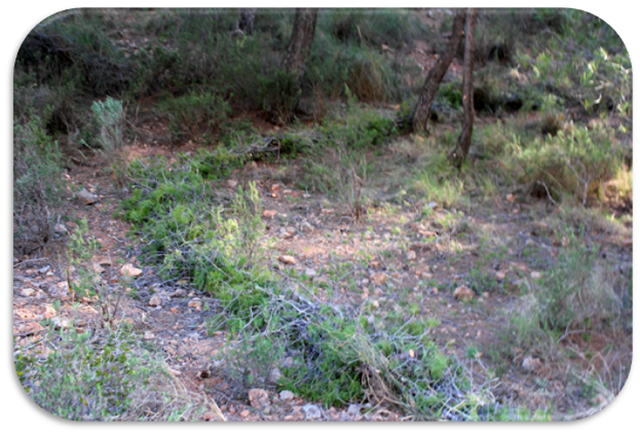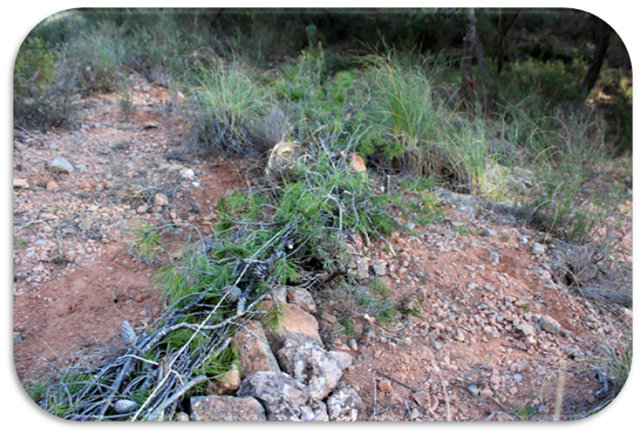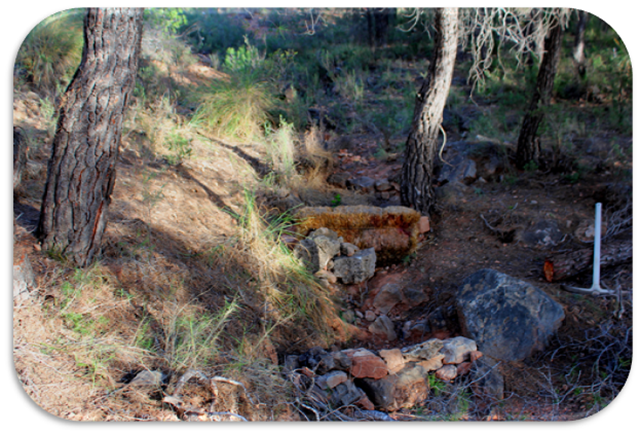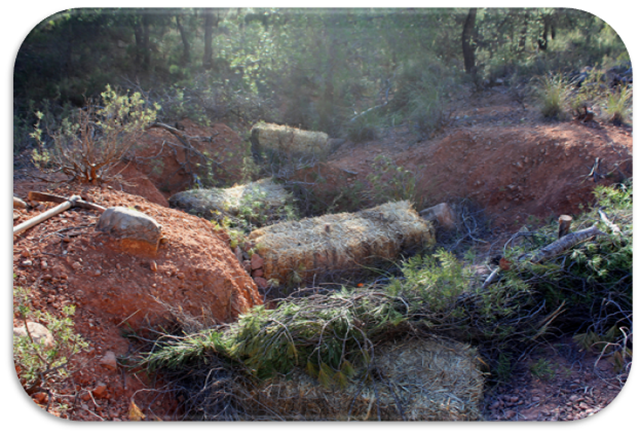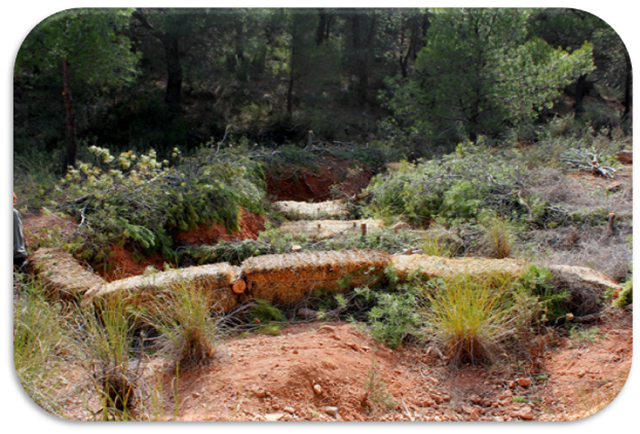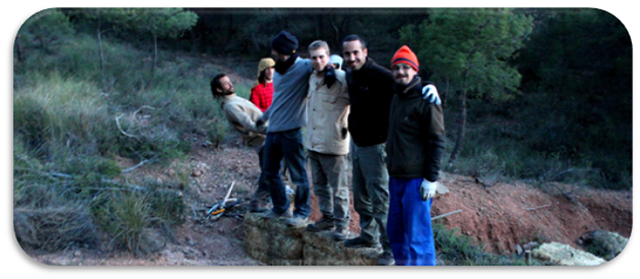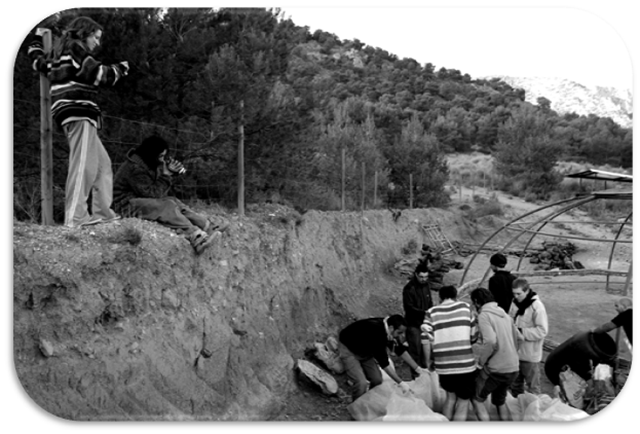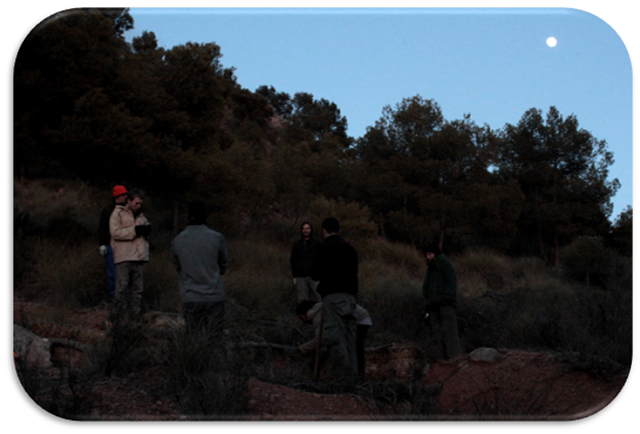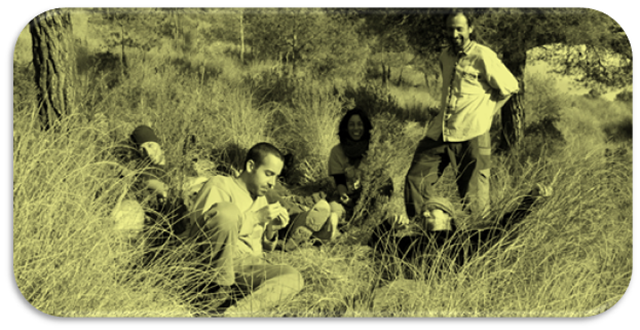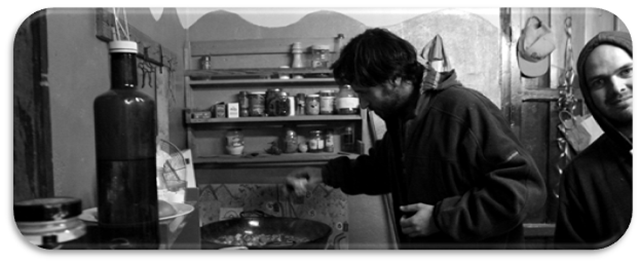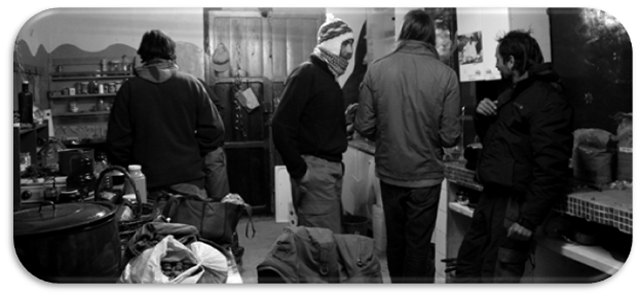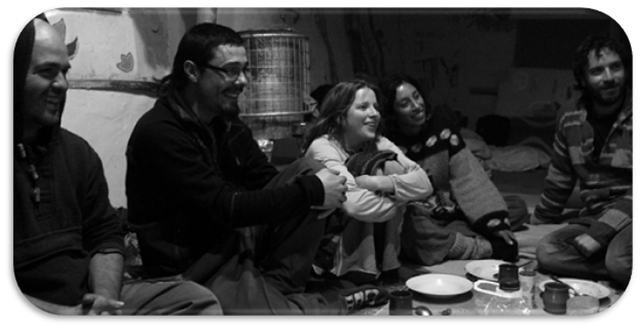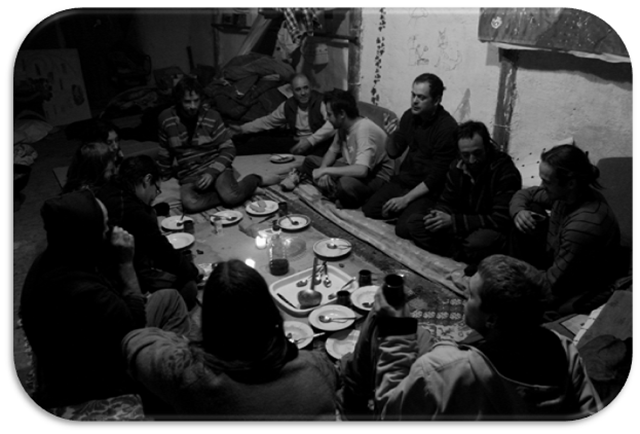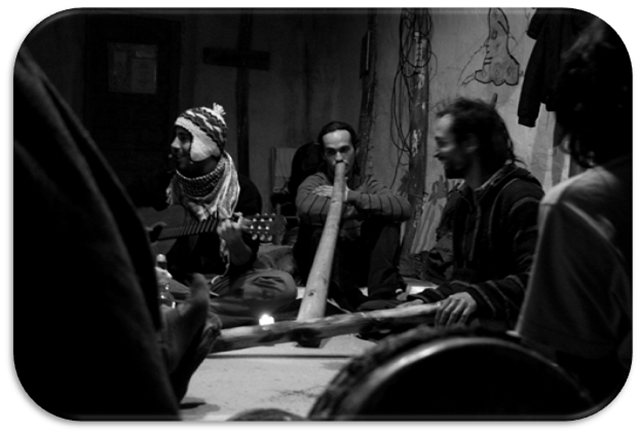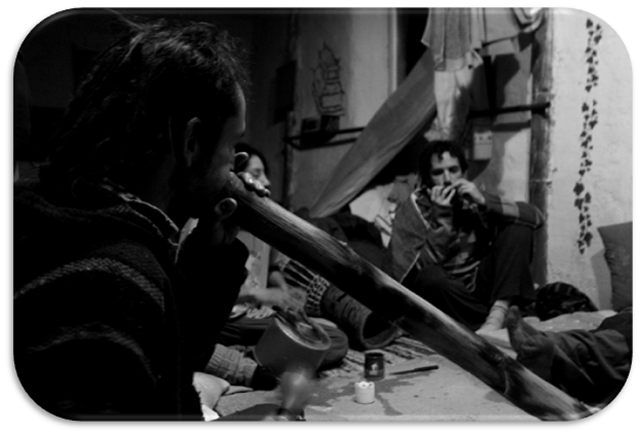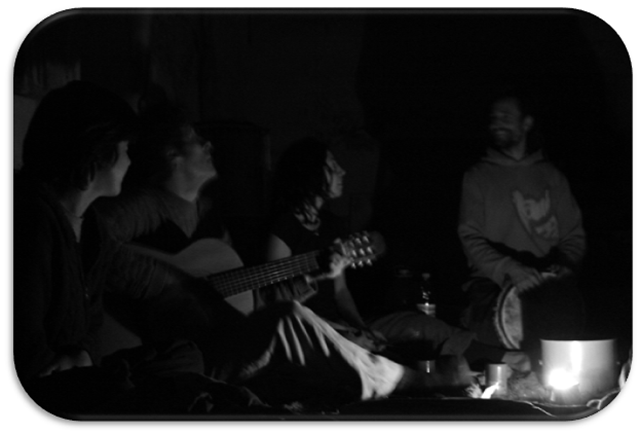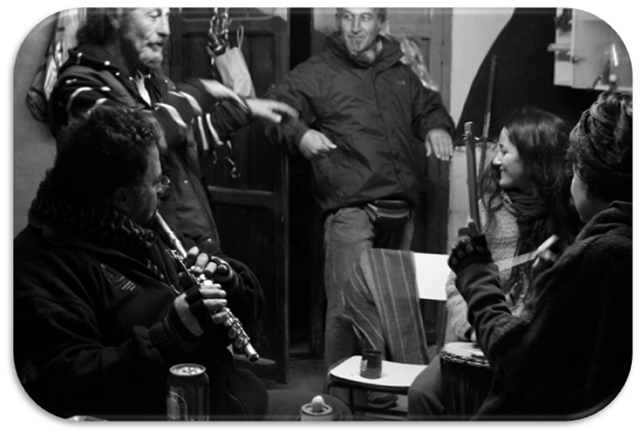Una preciosa memoria conclusión de las Jornadas escritas por nuestro hermano Jose (quien siente mucho que sea en inglés)
February 5, 2013
This post is going to be a difficult one to write. It is about
a magical week spent with the most fabulous people one can find. I hope
you feel like reading and get a bit of the spirit we shared.
This post is basically a summary of the “Voluntary days of
regeneration of the Mediterranean forest ”, where I had the pleasure to
meet people from Nuevos Recolectores, Bioconstruyendo Murcia, Permacultores del Sureste, Jardines de Acuario and the school of permaculture “ Finca los albaricoqueros”.
I am not going to get too technical. In summary, the goal of the
“action” was to reduce the water erosion suffered by uncovered earth,
create new soil and promote the growth of vegetation in a little patch
in Sierra Espuña, Murcia.
In the south of Spain rain is very scarce, but when it rains, it does
in a torrential kind of way. If there is no vegetal coverage, the water
sweeps along all the organic material, making impossible the further
formation of soil and evolution of the forest ( which is now mostly
populated with pine trees and little diversity of bush vegetation). In
the plot of forest were the regeneration took place, a “carcaca”
( a narrow dry river bed formed by water erosion) was growing, with a
lot of erosion involved. Our action aimed to, using straw bales and
“bio-rolls” ( branches of pine tree sewed together and placed in the
floor following the contour plan), decrease the strength and speed of
water, taking it away from the carcava. In this fashion the little streams of water formed after a strong rainfall would be deviated sideways away from the carcava,
forming soil that would support vegetation formation. And that’s why
the post is titled like that, because a lot of job involved was imaging
we were water.Where would the water go? How would the water react if we
placed this straw bale here? Would it stop? Would it erode further?
Anyone understood the explanation? Probably not. Better I show some pictures
This is how a “bio-roll” would look like when finished:
A “bio-roll” can be made of everything really. In this case we used
pine tree branches twined and sewed together with string. This is a
closer look:
“ Bio-rolls” are placed in the floor following the contour and their
function is to deviate the water from its course while reducing its
speed and strength. The idea was as well to reduce the speed of the
water inside the “carcave” using stones, more pine tree branches and
straw bales:
But I thing our biggest achievement was what we ended up calling “The
pit-bull bridge” in honour to the dog that spent the week with us ( No
picture of the dog, sorry. Silly me!)
where we ended up celebrating:
Our last job was mixing seeds with mud. I really like the next one,
because everyone seems to be doing something. Usually it was more “ the
Spanish way” ( one working and four looking and saying “ Pero que haces?
Asi no, hombre!”. Ha,ha…it’s not true but we laughed a lot about it.
Sorry for the stereotype!)
…seeds that we planted around the bio-rolls and straw bales under the moon ( See what I meant about the Spanish way? : )
But not everything was work. No at all. He had time to rest as well:
And fun. We had lots of fun. While cooking:
while eating:
We also saved time at the end of the day to reconsider what we had
done during the day and prepare the work for the next day ( always after
eating, ha,ha, so we were always in agreement : )
and music. Plenty of music:
With Fran from “El huerto de los albaricoqueros”
Here with people from Jardines de Acuario and Permacultores del sureste and “super Pepe” at the flute:
Thank you people. I am sure the seeds we planted will grow as tall as the sky. We did good.
Many hugs.
Jose Quemaoviejo.
